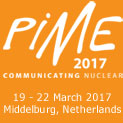Radiation protection areas
 scroll scroll 
Radiation protection areas are established in the
case of activities requiring a permit under national radiation protection
legislation. Depending on the level of radiation exposure, a distinction
is drawn between monitoring areas, controlled areas and exclusion areas
with regard to the external and internal radiation exposure. Wherever
EU regulations apply, the following values are valid:
-
Monitoring areas
Monitoring areas are in-plant areas which do not belong to the controlled
areas and in which persons may receive an effective dose of more
than 1 millisievert or organ doses higher than 15 millisievert for
the eye lens or 50 millisievert for the skin, hands, forearms, feet
and ankles in a calendar year.
-
Controlled areas
In controlled areas persons may receive an effective dose of more
than 6 millisievert or organ doses higher than 45 millisievert for
the eye lens or 150 millisievert for the skin, hands, forearms,
feet and ankles in a calendar year.
-
Exclusion areas
Exclusion areas are part of the controlled areas where the local
dose rate may be higher than 3 millisievert per hour.
Controlled areas and exclusion areas are to be fenced
off and marked permanently and be clearly visible. A residence time
of 40 hours per week and 50 weeks in a calendar year is decisive for
determination of the controlled area or monitoring area limits if no
other substantiated information on the residence time is available.
back
|
|
ENS conferences |
| |
 |
TopSafe 2017
12-16 Feb. 2017
Vienna, Austria |
 |
PIME 2017
19 - 22 March 2017, Middelburg Netherlands |
 |
RRFM 2017
14 - 18 May 2017 in Rotterdam, Netherlands |
 |
ETRAP 2017
30 May - 2 June 2017, Valencia, Spain |
|
|